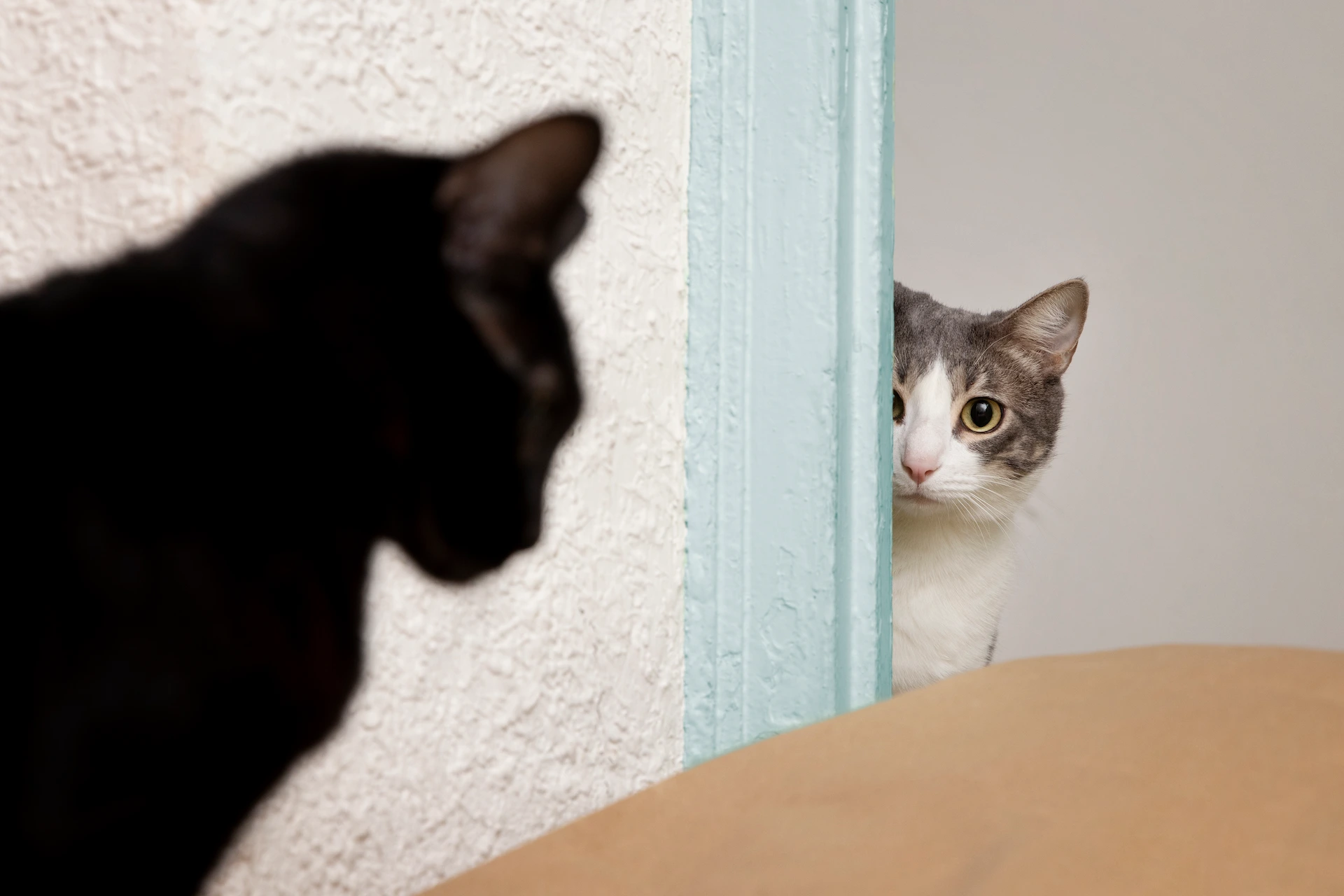
Cats are more stressed than you think
A cat's life seems so easy, eating and sleeping and not having to work. But did you know that cats also have things that make them stressed? For cat owners to understand.
8 things that will help you understand your cat more

Research on cat behavior and physiology is a popular topic of study for many scientists. As you can probably guess, many of these scientists are cat lovers who want to understand their beloved felines more deeply, just like you.
1. Win over your cat with a cat-like smile.
Researchers from the University of Portsmouth and the University of Sussex in the UK have found that the cat smile, which is a slow, rhythmic blink, can significantly strengthen the bond between cats and their owners, as well as improve communication.
The researchers recommend that owners stare at their cat and close its eyes as tightly as they would if you gave it a relaxed, soft smile. Keep your eyes closed for about two to three seconds before slowly opening them. Repeat this several times and you should see your cat “smile back” by blinking slowly at you.
2. 1 in 10 house cats feel anxious when separated from their owners
We often think of cats as indifferent to the people around them. But scientists at Brazil's Federal University of Juiz de Fora have found that a cat's problem behaviors, such as destructive behavior, inappropriate elimination, loud meowing or aggression, are sometimes caused by separation from their owners and familiar objects, such as toys or pets. A 13.5% link between such negative behaviors and cat-human relationships was found in a study of 223 house cats.
3. Cats can bond with you and love you from the bottom of their hearts.
Cats are generally believed to view humans as servants and are not as loyal to their owners as dogs. However, a study by Oregon State University in the US found that cats are not so cold-hearted creatures. An experiment on 70 kittens whose owners left the room during play showed that the kittens had a “secure attachment” to their owners, similar to how a baby feels secure when they are with their mother, and how a dog trusts that its owner will protect it.
4. Cats can sense thunderstorms in advance
Cats and many other animals have a much more sensitive sense of sound and smell than humans in nature. The drop in atmospheric pressure before a storm allows their inner ears to detect and even hear faint rumbles of thunder from a distance. They may also be able to smell ozone gas produced by lightning, which has a metallic odor.
5. “If it fits, I’ll sit.” Even the illusion box is not spared.
Cat lovers online often make fun of their cats' love of cardboard boxes and tight spaces, saying, "If I fits, I sit." This behavior is no exception to cats' behavior, even with circles or squares that people draw or paste on the floor, even though these lines are not real boxes or three-dimensional containers.
Recently, researchers from the City University of New York (CUNY) have also found that cats like to sit in the Kanizsa square illusion, which makes it look like there is a square, even though there are no lines connecting it to form an actual square. However, the imagination in the cat's brain can connect existing information to fill in the missing visual information until it is seen as a square.
6. Cats are one of the main drivers of wildlife extinction.
Domestic cats are great hunters, and this behavior has caused the population of these animals in some areas to decline so much that they are almost extinct. Research from the University of North Carolina in the United States indicates that pet cats will hunt within a 100-meter radius of their homes and kill two to ten times more animals such as birds, mice, squirrels and other reptiles than natural predators of the same size.
7. Cats cannot eat vegetarian food.
Although cats are naturally carnivores, the growing trend of vegans for health has led some cat owners to feed their cats vegetables and grains as their main source of nutrition. However, scientists have warned that forcing cats to eat vegetarian food will cause them to lack “taurine”, a protein that the cat’s body cannot produce on its own. Cats that lack taurine may become blind, suffer from heart failure, and develop severe urinary tract infections. Adding synthetic taurine to a cat’s vegetarian food may not help much.
8. A cat's whiskers make it a skilled killer.
Cats have about 24 whiskers under their noses, but similar ones also exist above their eyes, on their chins, and on the backs of their front paws. The whiskers are connected directly to nerves, allowing them to sense their prey more sensitively when hunting in the dark. The tips of the whiskers also contain special sensory organs that measure distance and air currents, help calculate the position, direction, and even the texture of their prey, making them very accurate hunters.
Other Blog

A cat's life seems so easy, eating and sleeping and not having to work. But did you know that cats also have things that make them stressed? For cat owners to understand.

Improper or inappropriate management of your cat's bathroom or litter box can be more harmful than you think. One of the causes of stress in cats

Research on cat behavior and physiology is a popular topic of study for many scientists.

98/198 Soi Ramkhamhaeng 39 (thepleela 1) Plubpla, Wang Thong Lang, Bangkok 10310 THAILAND
Copyright © 2024 Pet Quarter. All rights reserved